
The species of trees and shrubs that belong to the genus Magnolia They are those whose flowers are, in general, large, with soft colors and very beautiful, which are also aromatic. They take their time to grow, but despite this, it doesn't take long for them to start blooming.
To date, About XNUMX species have been described., being many of them -the vast majority, in fact- deciduous; although there are some that are evergreen as we will now see.
What is the magnolia?

Image – Wikimedia/maz84
The Magnolia is a genus of trees and shrubs that live in the Americas (specifically from eastern North America to South America), as well as in Southeast Asia. We could say that they are primitive plants, since it is known that their ancestors began their evolution about 170 million years ago (you have more information here, clicking on Magnoliales).
Its growth rate, as we said at the beginning of the article, is quite slow, being able to grow about 10 centimeters per year only in the best growing conditions. They develop a trunk which can branch out a short distance from the ground., forming a wide cup, whose diameter ranges between 3 and 6 meters.
The leaves are simple or lobed, usually large and green. They sprout in a spiral, and Depending on the species, they fall either in winter, or they do so throughout the year.
Its flowers can be female, male, or have organs of both sexes that mature at different times.. They measure up to 30 centimeters in diameter, and are white, white-pink, or some shade of pink. Once they sprout, something they do in spring, they remain open for a couple of days.
The fruit can be hard or somewhat soft, and contain seeds of about 2-3 centimeters.
What is?
Let's now talk about the uses that are given to magnolias or magnolias. The first and most popular is the ornamental. They are plants with flowers of great beauty and elegance, which also cast a cool shade when they are adults.
In their places of origin they have other uses, such as for build houses, do carpentry or joinery work; or even as a medicinal plant. In this sense, it is interesting to say that in Spain there are already tea sachets for infusion or dried magnolia flowers, which have anxiolytic properties.
Magnolia types
Next you will see the main species of Magnolia, the ones that are most cultivated:
denuded magnolia
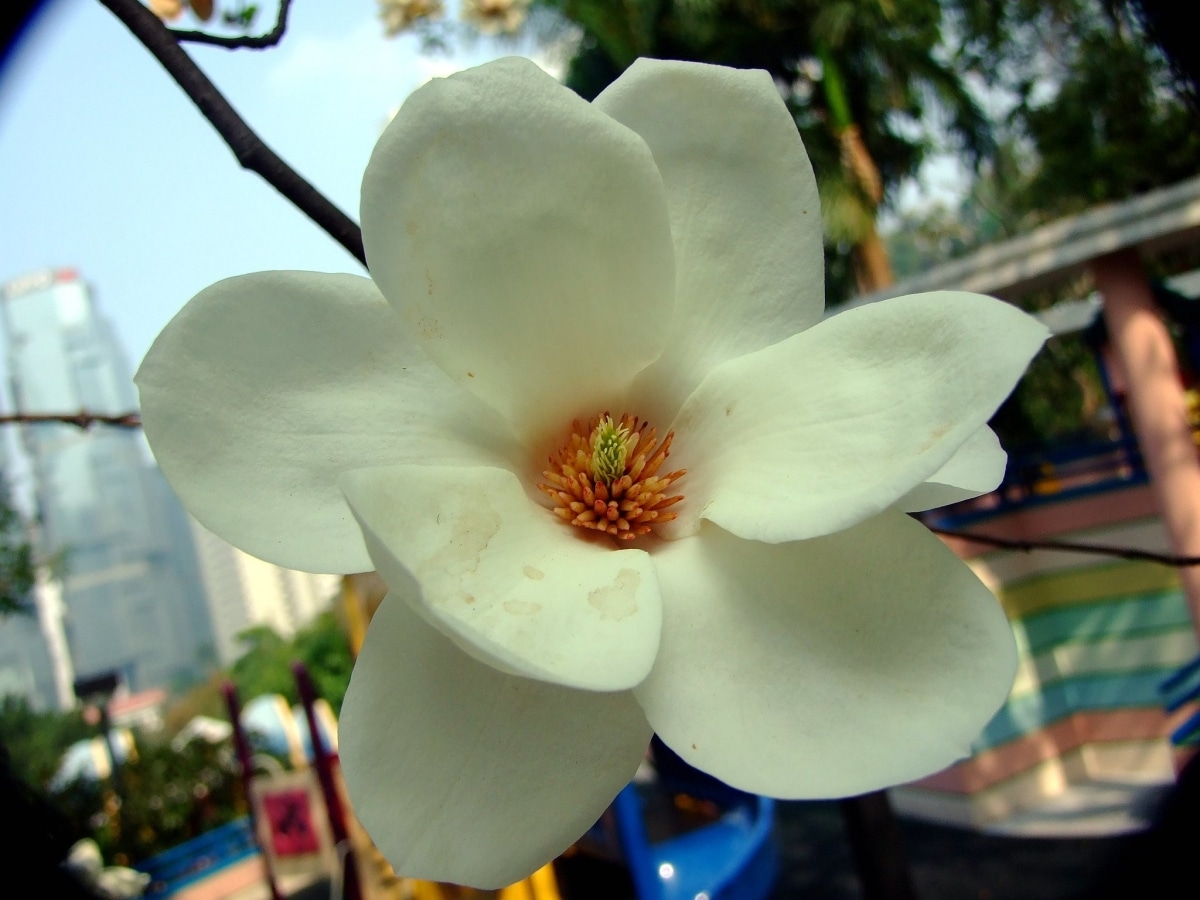
Image - Flickr / Kai Yan, Joseph Wong
La denuded magnolia, also called yulan magnolia, is a deciduous tree native to China. Reaches 15 meters in height, and its flowers are white, about 15 centimeters in diameter.
magnolia grandiflora
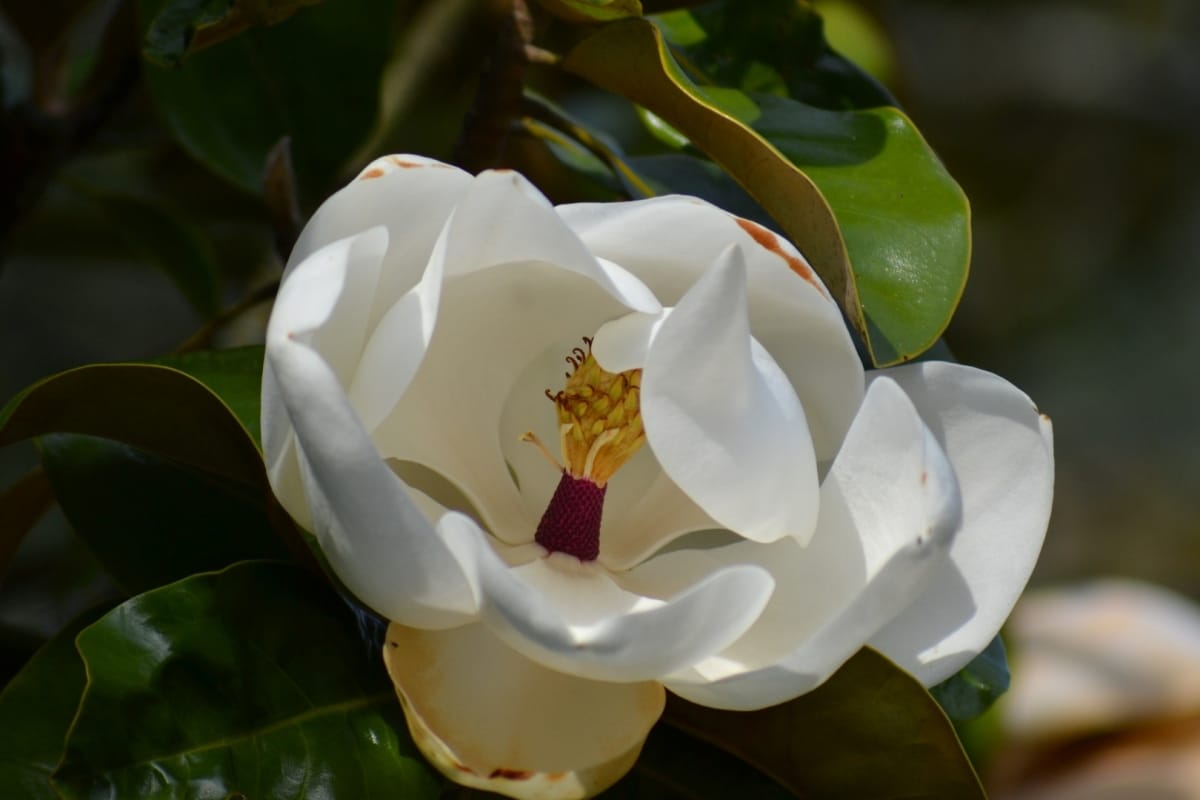
La magnolia grandiflora it is a perennial magnolia, sometimes called magnolia or common magnolia. It is an indigenous species of the southeastern United States that is also widely cultivated in the rest of the world. It can reach 30 meters in height, and develop a crown several meters wide. Its flowers are very large, about a foot in diameter, and are white.
magnolia kobus
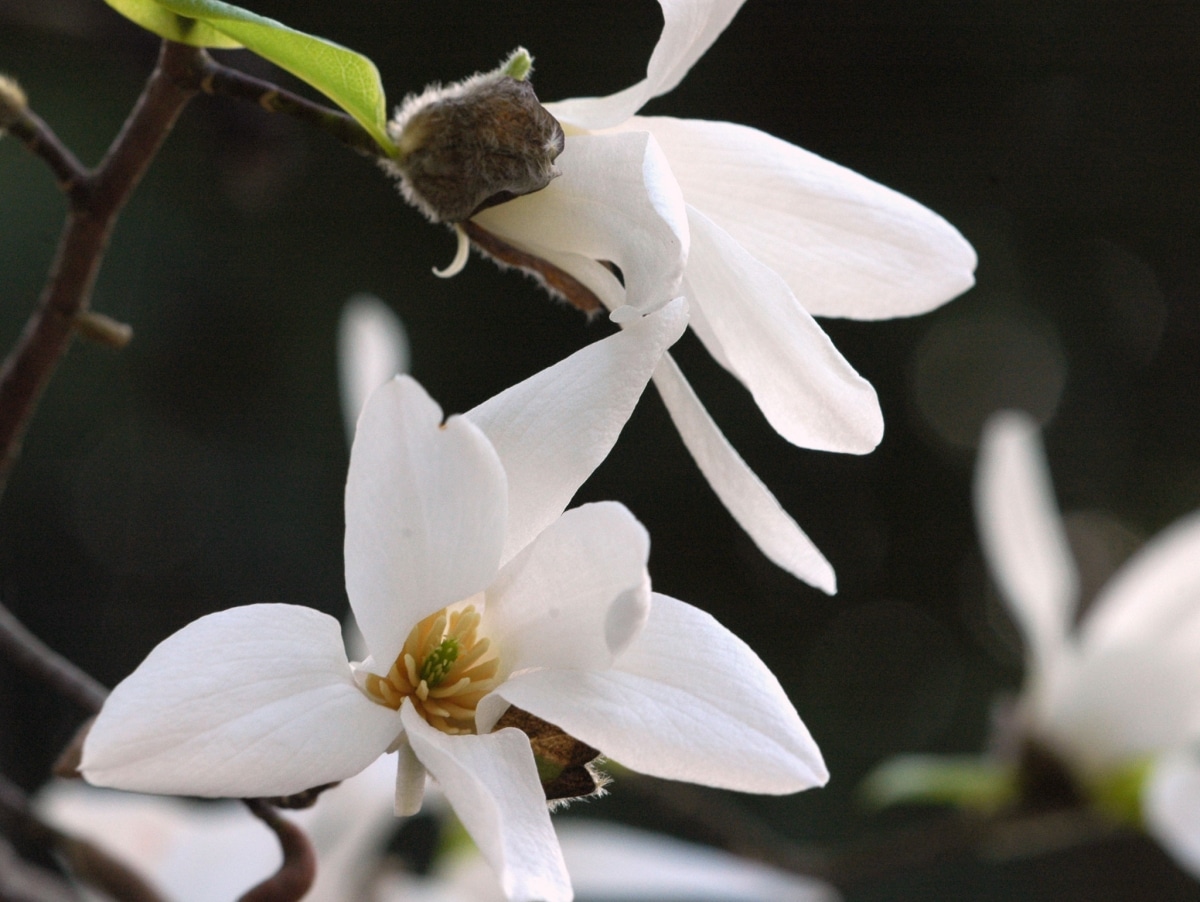
Image - Flickr / autan
The Magnolia kobus is a deciduous tree native to Japan, which reaches 20 meters in height. Its crown is very wide, and it also branches at a very short distance from the ground. Its flowers are also white, and measure about ten centimeters in diameter.
magnolia liliflora

It is a species known by the names of lily tree or tulip magnolia, since its flowers are quite similar to those of these plants (lilies and tulips). These are pink, and measure about ten centimeters in diameter. Reaches 4 meters in height, and is a deciduous plant native to China.
magnolia officinalis
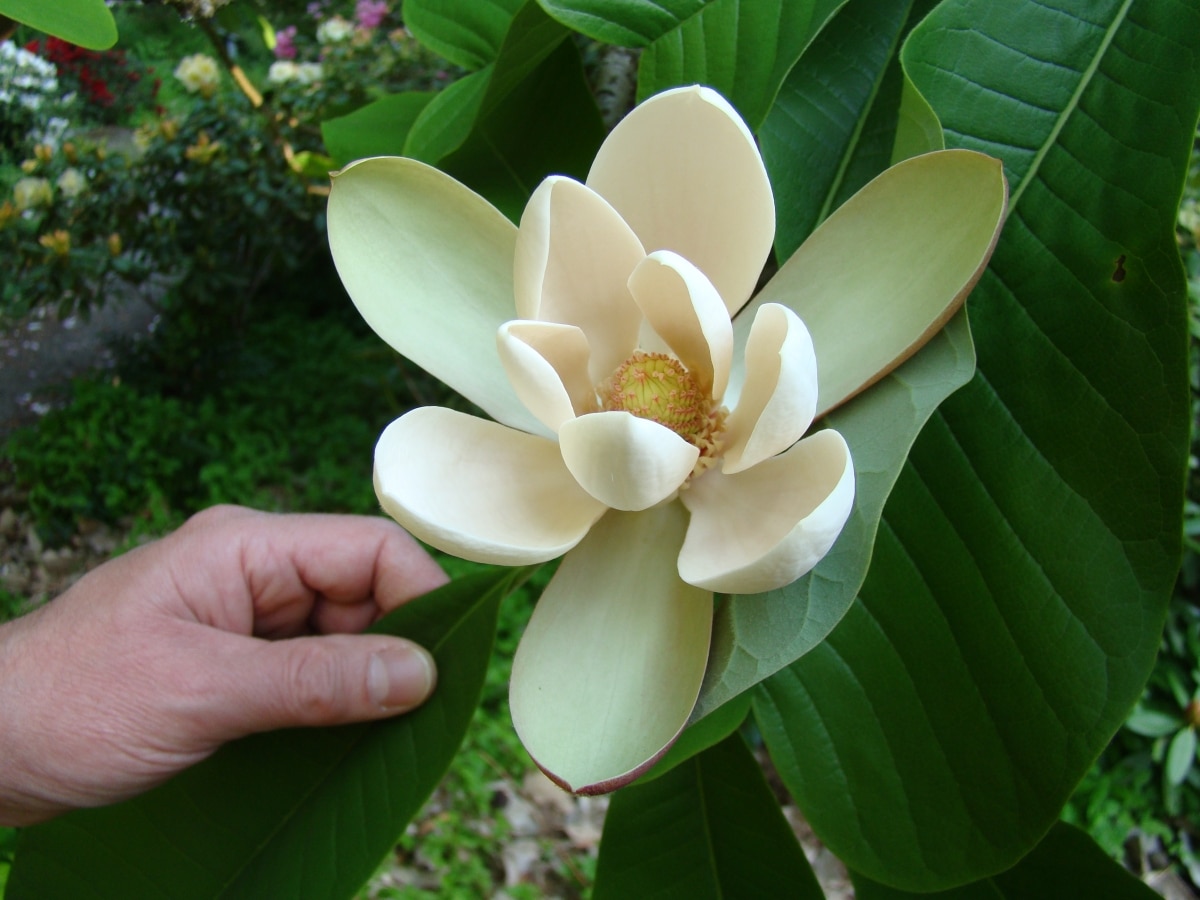
Image - Wikimedia / Wendy Cutler
La magnolia officinalis is a variety of deciduous Magnolia native to the mountainous regions of China. It reaches 20 meters in height, and its leaves are green, up to 30-35 centimeters long. Its flowers are white, and measure about 10 centimeters in diameter.
Magnolia sieboldii
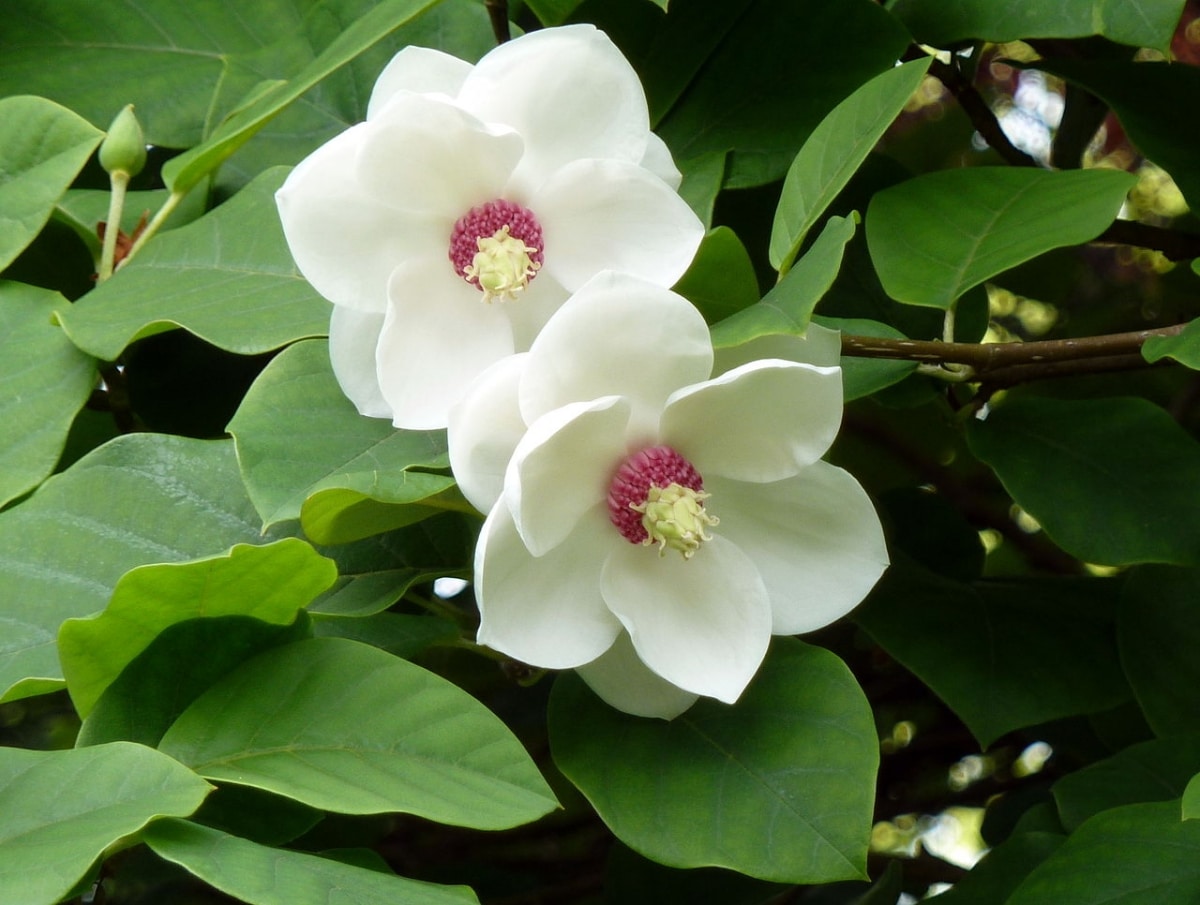
Image - Wikimedia / Wendy Cutler
Siebold's magnolia is a deciduous tree native to East Asia. It grows between 5 and 10 meters in height, and produces white flowers, about ten centimeters in diameter. In addition, it has reddish stamens.
Starry magnolia
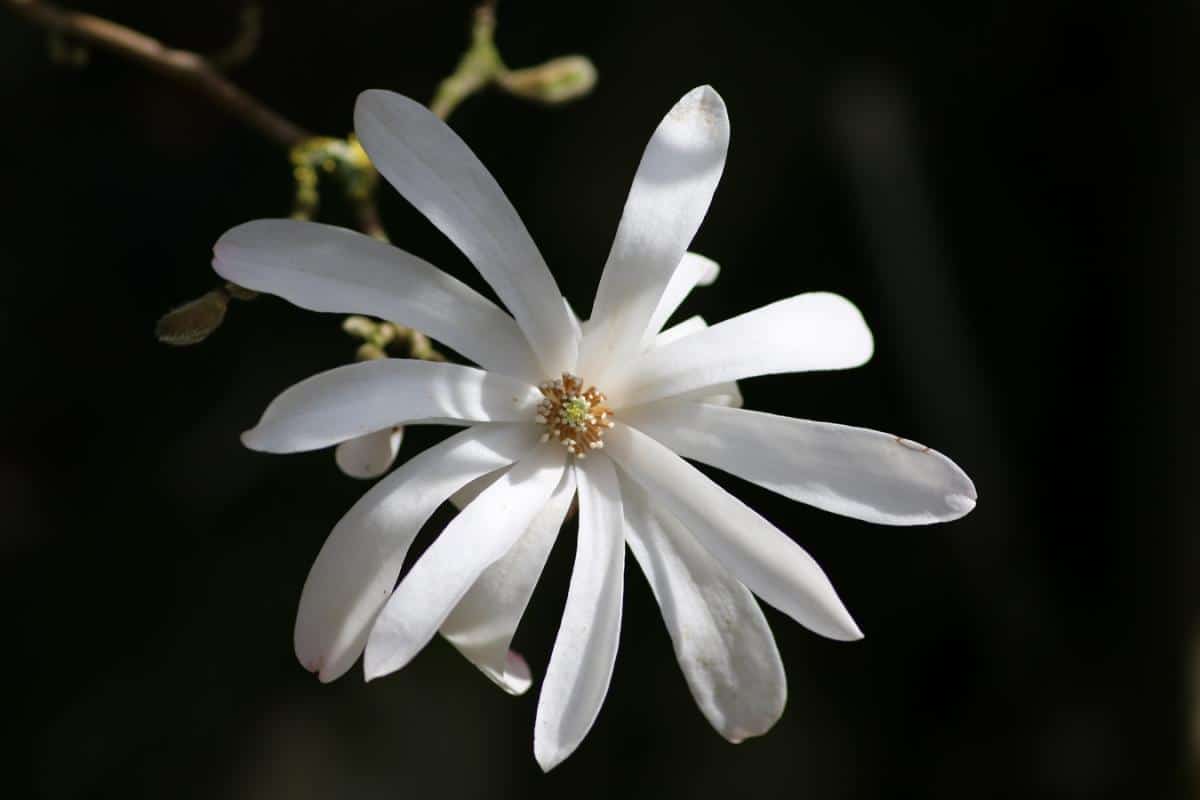
The star magnolia is a deciduous shrub native to Japan that reaches 3 meters in height. Its leaves are simple and green, and the flowers are pink, about 7-9 centimeters in diameter.
Magnolia x soulangean
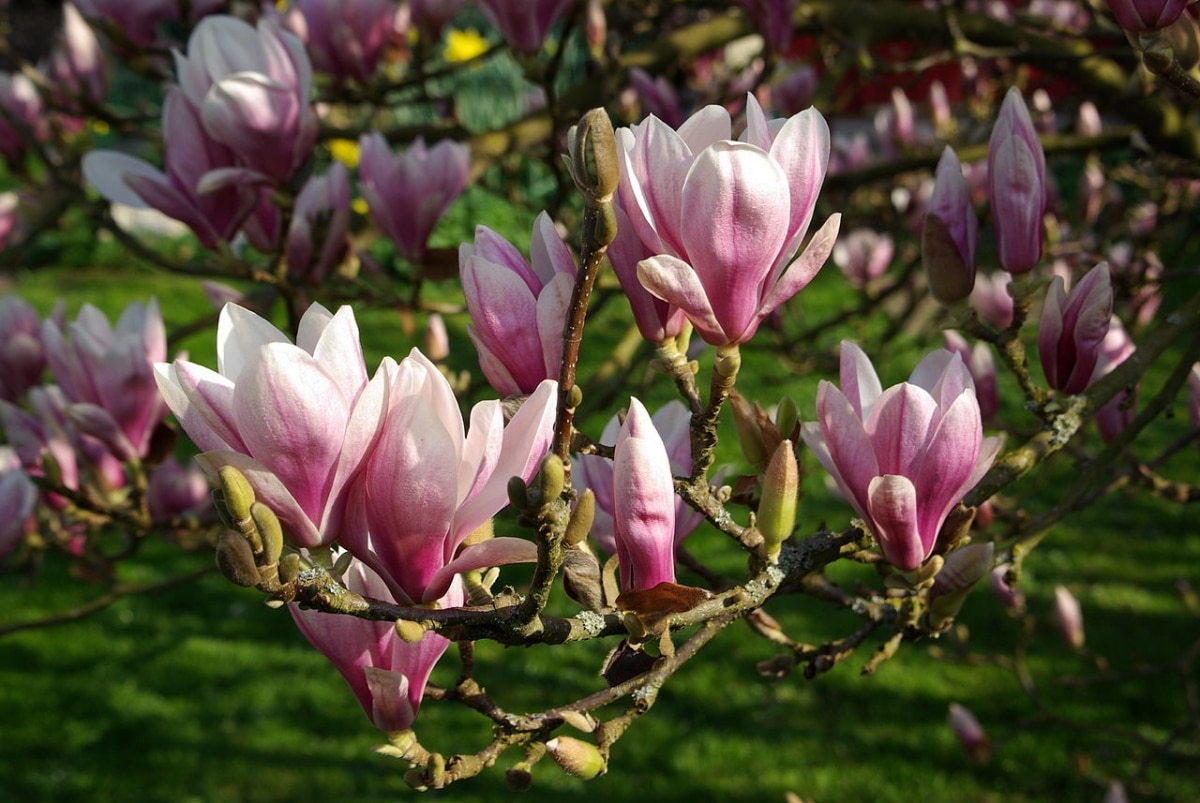
Image - Wikimedia / Berthold Werner
The Soulange magnolia is a deciduous hybrid that was obtained by crossing denuded magnolia y Magnolia lilifolia. It grows between 5 and 6 meters in height, and produces flowers that can be white, white-pink, or whitish on the inside and bright pink on the outside. These can measure up to 10 centimeters wide.
virginian magnolia
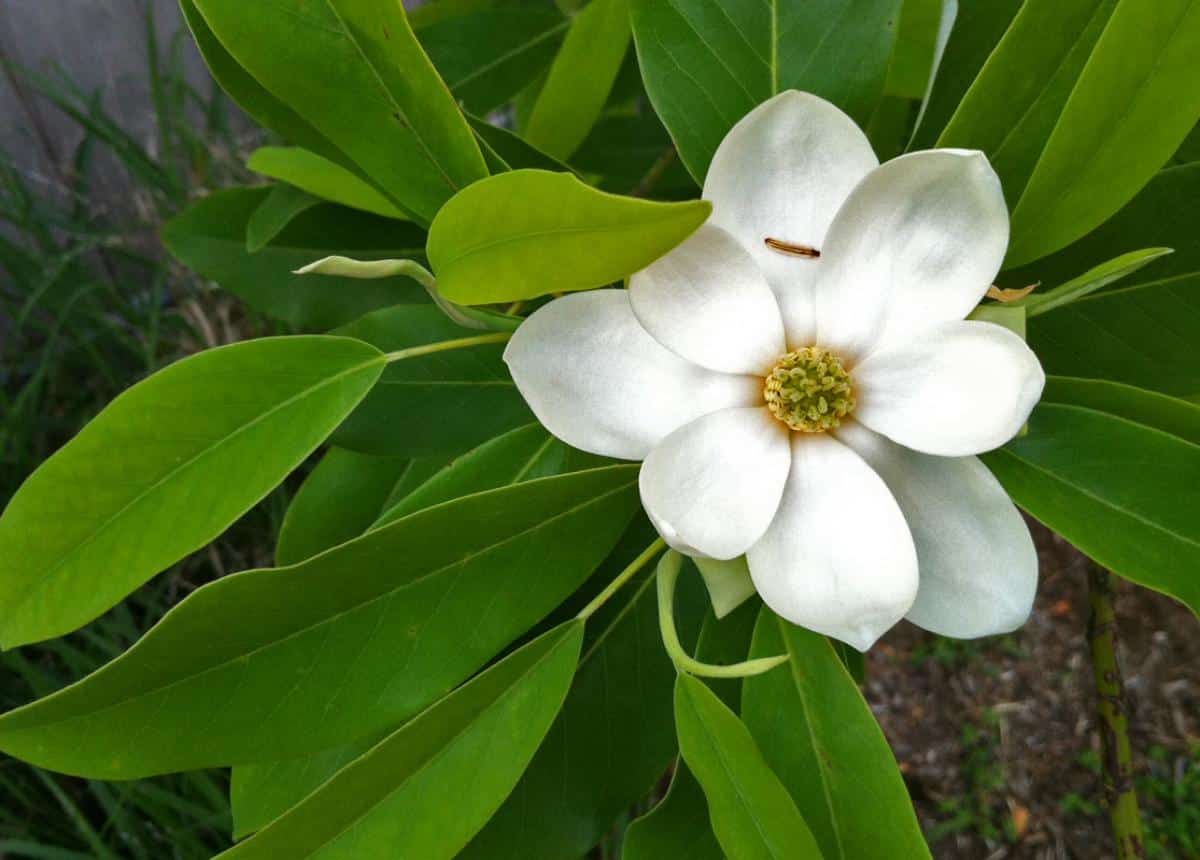
Image – Wikimedia/JE Theriot
La virginian magnolia It is a tree that is found in the southeastern United States, and may or may not lose its leaves depending on the climate. It can be confused with M. grandiflora, but the flowers of the latter are much larger; in fact, they measure about 20 centimeters in diameter more than those of M. virginiana. It can measure up to 30 meters in height.
What is the care of the magnolia?
Before buying even one specimen, it is highly recommended (I would even say necessary) to find out about the care that this type of plant requires. And the fact is that if we don't do it that way, there would be a good chance that we would end up spending money on a plant that, although it is not very demanding with some things, it is with others. For example:
Climate
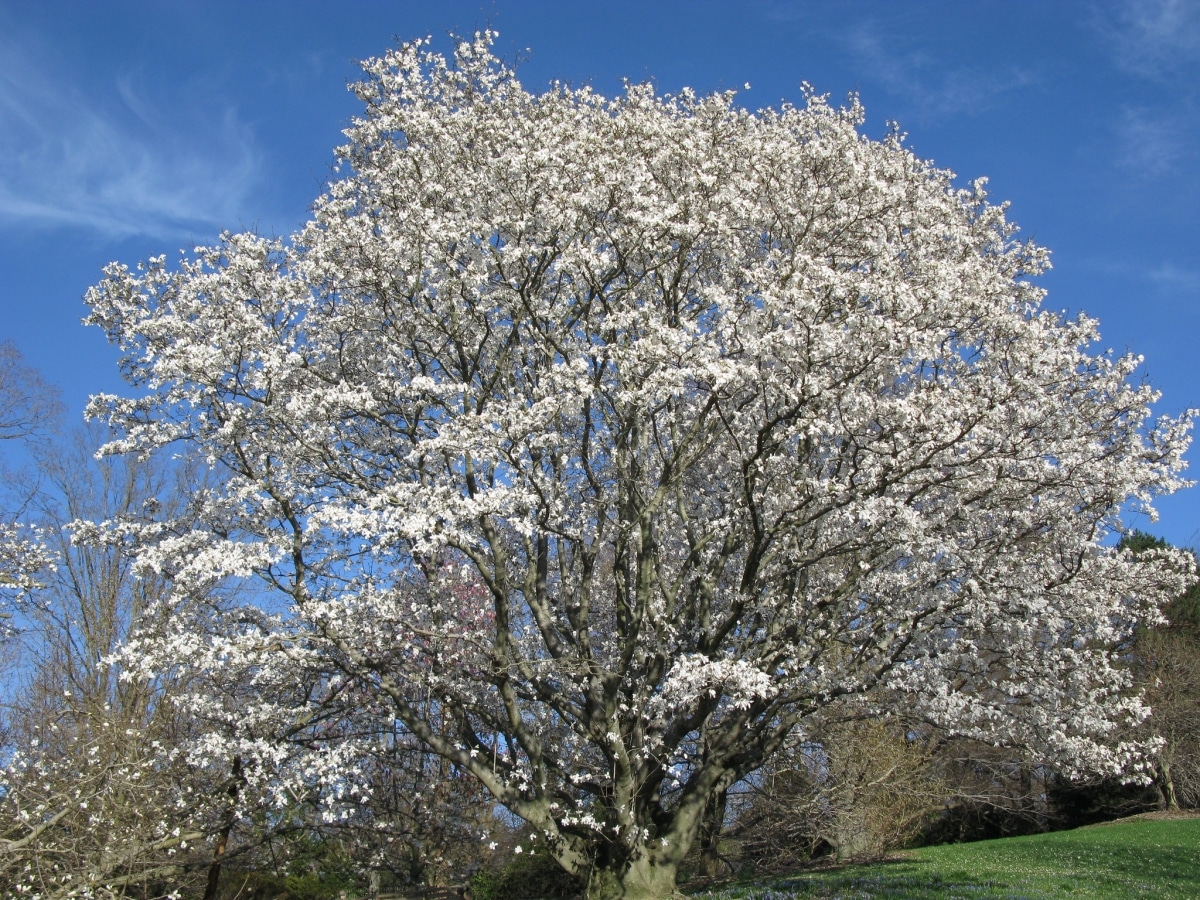
Image – Flickr/Bob Gutowski // magnolia salicifolia
Magnolias, as you have seen, can be deciduous or evergreen. The first are those that live in the highest and/or coldest regions (not necessarily at high altitudes), and therefore are exposed to the low temperatures of autumn and winter; the latter, on the other hand, live in somewhat warmer areas, so they do not need to lose all their leaves when the cold arrives, since the temperatures are high enough to continue maintaining them.
Therefore, If the climate in your area is rather warm, like the Mediterranean for example, it will be much more advisable to acquire some evergreen magnolia, such as the magnolia grandiflora, than a deciduous one. I have both types, in Mallorca (with temperatures that can reach 39ºC during a heat wave, and drop to -1,5ºC in a cold wave), and while the M. grandiflora remains beautiful in summer, the deciduous one, on the other hand, has a very bad time.
Ideal soil for magnolias in the garden
Originally, these plants grow in acidic soils, so it is important that we plant them in the garden only if the soil we have is like this, acidic, with a pH between 4 and 6. If in our neighborhood there are japanese maples, camellias, azaleas, or other types of acid plants and they look healthy, there will be no doubt that we can do it too, but in case of doubt the best thing you can do is find out the pH of the soil, for example with a meter like this.
If, on the other hand, the soil is clayey, as its pH is 7 or higher, I do not advise you to plant any magnolia in it., since as soon as the roots touched that soil, the leaves would turn yellow, becoming chlorotic. Although it can be avoided by paying it with a fertilizer for acidic plants, adding coconut fiber or blonde peat to the soil, since it is a plant that becomes large, in the end it is more convenient to have it in a pot.
Soil more suitable for those grown in pots
When we are interested, or when we have no choice but to have them in a pot, we will plant them in ones that measure about ten centimeters more in diameter and height than the ones they have at that time. In addition, it is very important that these have drainage holes, since they would not survive long if they did not have them, since they do not support excess water.
Likewise, as a substrate we have to think about putting a specific one for acid plants (on sale here), or coconut fiber (for sale here), which also has a suitable pH for magnolias.
Irrigation
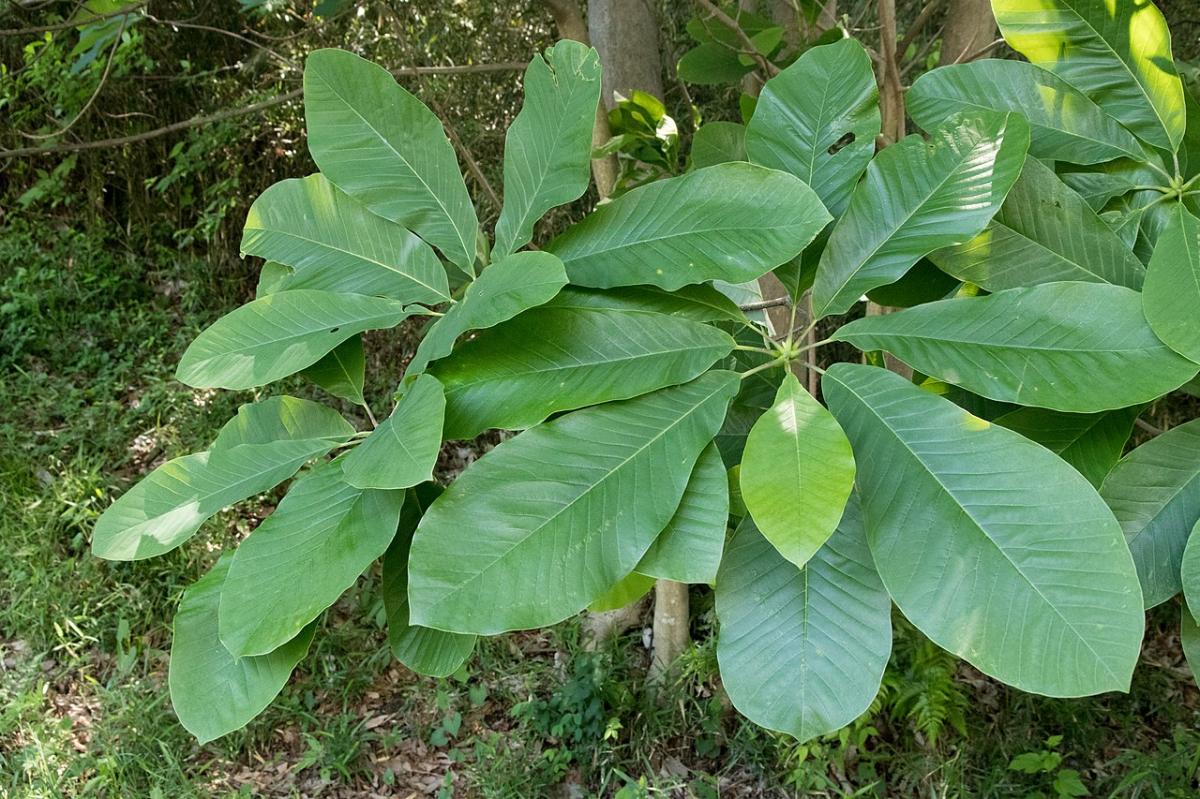
Image – Wikimedia/Σ64 // obovate magnolia
They need to receive water on a regular basis throughout the year. During the first and the summer you have to be more aware, since that is when they are growing (unless the temperatures are too high, in which case it will be necessary to water, not so much so that they can grow, but rather so that they can survive, avoiding dehydration).
The water that we will use will be rainwater whenever we have the possibility to do so.; if this is not the case, we can use fresh or bottled water, suitable for consumption.
The question is: when should you water? Well if it doesn't rain, we will do it several times a week, except in winter that will be when we space the risks.
Fertilize the magnolias
to the magnolias they must be fertilized whenever they are in pots, but it is also advisable to do so if they are in the garden. In the first case, we will pay them with liquid fertilizers for acid plants such as this, and in the second -if the land is acidic-, we can add granulated or powdered fertilizers such as guano or manure, for example.
The fertilization season will begin in spring, once the frosts pass, and will end in late summer or autumn, as soon as temperatures begin to drop.
Multiplication
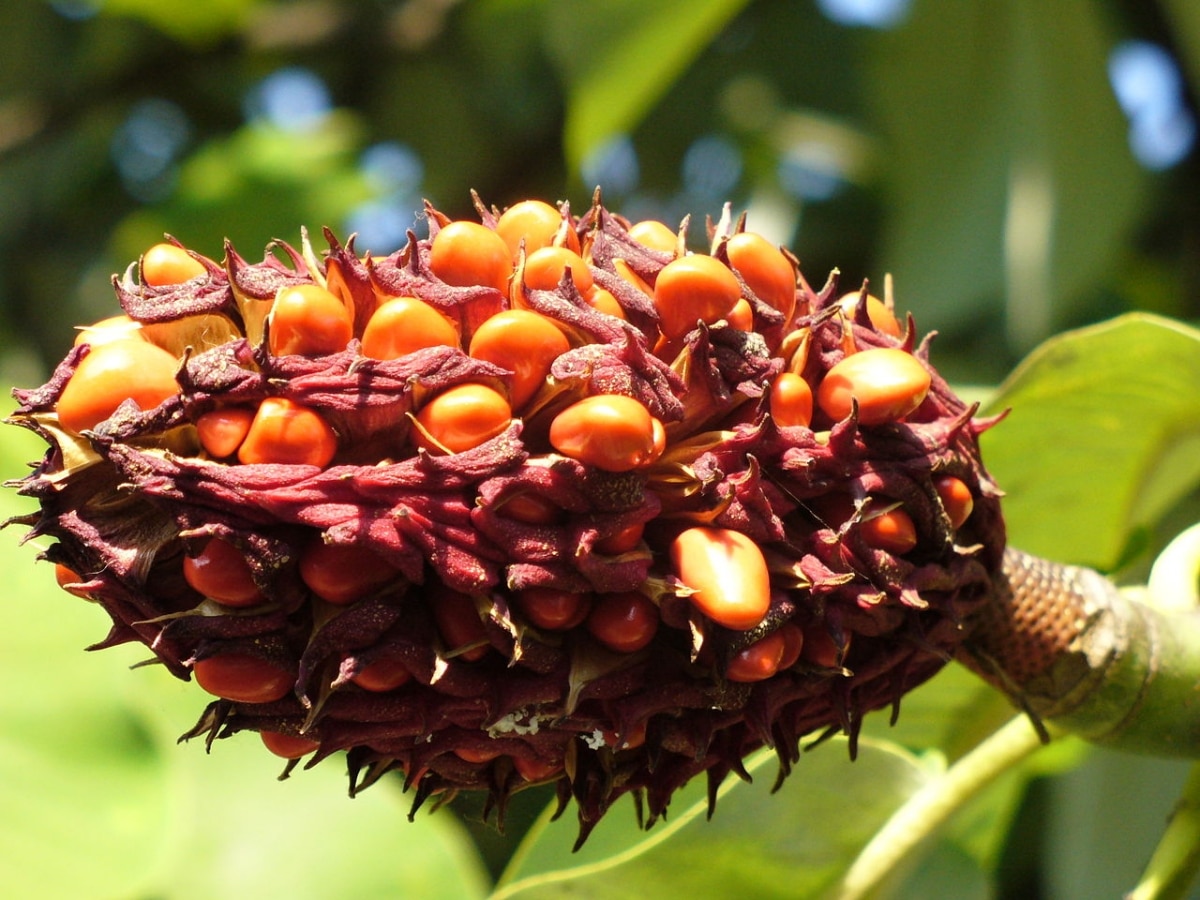
Image – Wikimedia/Junichi
Magnolias can be multiplied by three different methods:
- Seeds, which must be sown outside in the fall.
- Semi-woody cuttings, which are taken from healthy branches in late winter/early spring.
- Aerial layering, which is carried out at the beginning of spring, on branches that are one or two years old.
Rusticity
Depending on the species, there are magnolias that are more rustic than others. For example, deciduous ones are much better adapted to live in environments where autumns and winters are cold, but if you grow them in areas where the summer is very hot, they will not be able to withstand it (or it will cost them a lot). On the contrary, evergreens withstand heat better than cold.
Although they all resist frost and snowfall, it is not only the resistance to cold that we have to look at. A magnolia grandiflora It withstands temperatures of up to -18ºC well according to several web pages consulted, and from my own experience I can also tell you that a heat wave (or several that occur in a short time) with maximum values of up to 39ºC and minimum of 22 does not harm it. -24ºC; on the contrary, one magnolia kobus It will hold up to -20ºC, maybe even less, but growing it in an area where temperatures exceed 30ºC in summer will be very complicated.
The magnolia is a very beautiful plant, from which I hope you have learned a lot by reading this article.